Million Piece Mission
During the current COVID era, brands are faced with an immensely competitive landscape when it comes to connecting with consumers through…
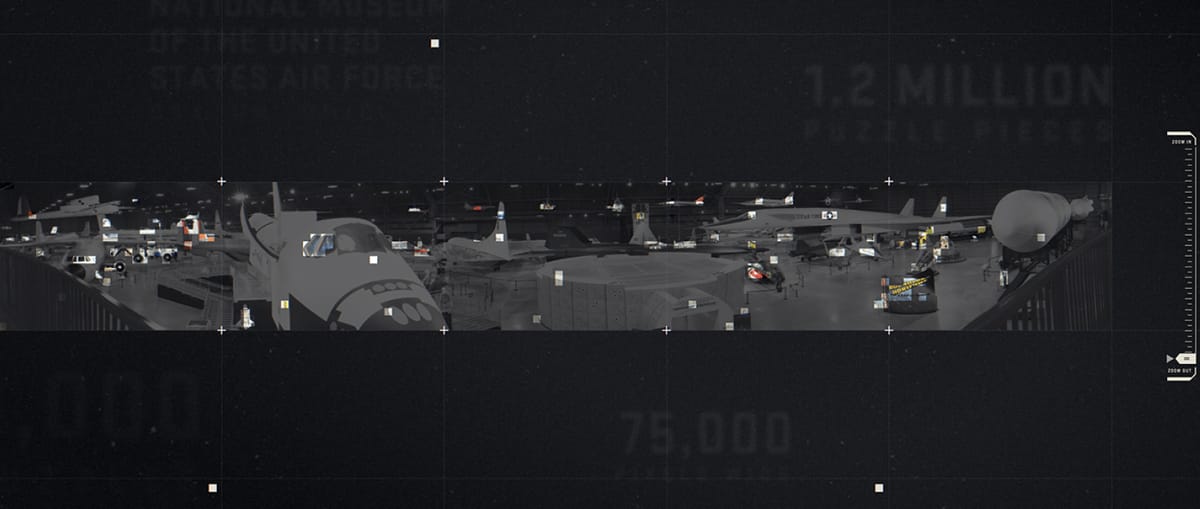
During the current COVID era, brands are faced with an immensely competitive landscape when it comes to connecting with consumers through digital media. For the Million Piece Mission, we worked with GSD&M to cut through this noise and develop something genuinely different and enjoyable for potential Air Force recruits and enthusiasts.
Evolving The Concept
At a high level, the idea was simple: create the world’s largest virtual puzzle. This concept stemmed from the intersection of a quarantine insight (puzzles are very popular right now), and the Air Force’s mission (aiming high and working together).

Using our Dreamwave Platform, we suggested a massively multiplayer puzzle approach, allowing players to puzzle together in real time.
Sourcing the Puzzle Image
In order to create a massive, virtual puzzle, we needed to source an enormous base image. As a creative aspiration was having 1 million pieces in the puzzle, we used this as a starting point and worked backwards.
Starting with some math, we hypothesized a few different scenarios to try to understand how big an image needed to be in order to have 1 million pieces. This was primarily based on the size of each puzzle piece. For example, if a puzzle piece was 100px², the entire image would need to be 10 gigapixels. If a puzzle piece was 50px², the entire image would need to be 2.5 gigapixels.

The led us down a path looking at different instances of gigapixel images. Starting with space imagery (which have large captures), we reviewed the photos of Andromeda Galaxy (1.5 gigapixels) and the Moon’s Nothern Polar Region (681 gigapixels).
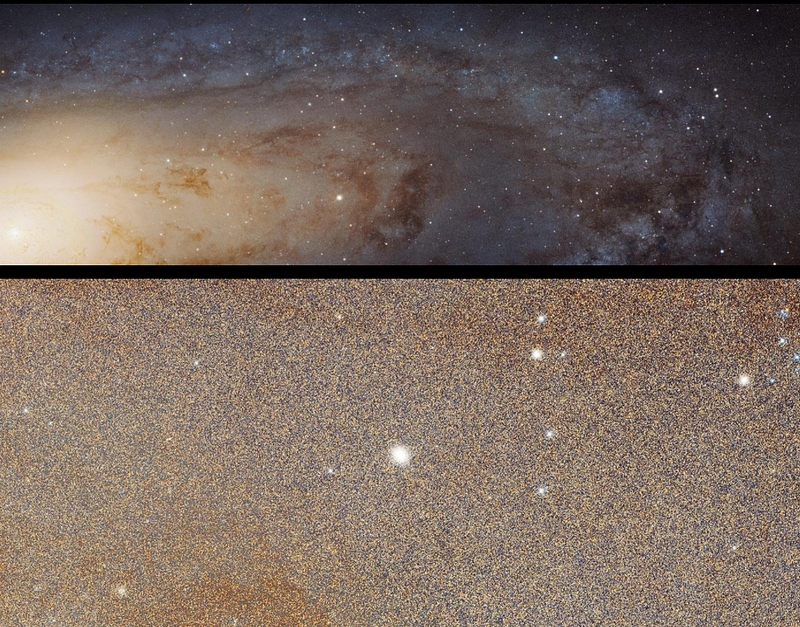

While there are some massive captures of space, the visuals are quite homogenous which wouldn’t have made for a very interesting puzzle.
We then zeroed in on the aviation material specifically and came across the National Museum of the United Stated Air Force in Dayton, Ohio. This was a perfect subject as it not only fit the technical requirements, but contained all sorts of aviation details that we could later work in to give a backstory to the puzzle.

Splitting Up The Image
Once we had the image, we needed to make it work as a massive puzzle. Rather than force all users into a single puzzling space, we split up the gigapixel image into a series of smaller tiles. Each tile would act as its own independent puzzle that could be completed in a room with multiple users. These tiles would then all be pieced together in order to create the entire puzzle image.
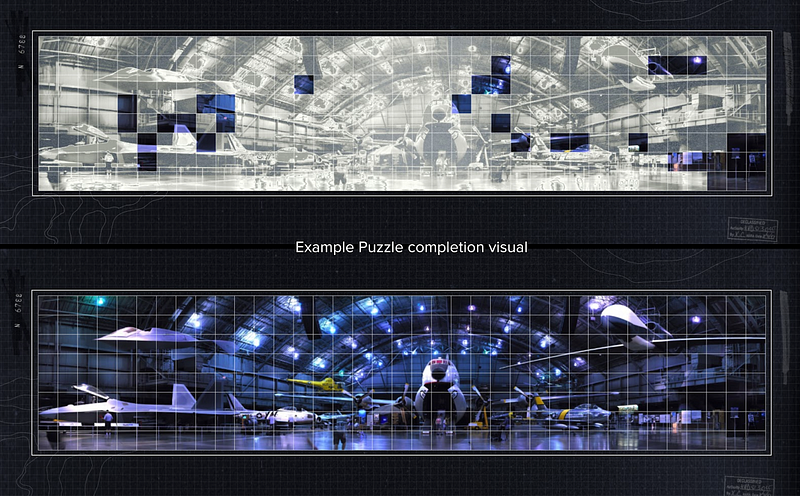
In order to determine the number of tiles to make up the image we did some hands-on research and had the team play a variety of existing online puzzle games. From this, we felt that around 400–500 pieces per puzzle was a sweet spot. Not too many pieces to deter the user, but also not too few to discourage them.
Using the 1 million piece criteria, we did some simple math to multiply this out and found that the entire image would be made up of 3000 individual tiles.
Managing a Massive Image
One immediate step we took to embracing performance efficiency was building a LOD system to manage image zoom. As the image itself is over 1 billion pixels, we couldn’t enable standard zooming in and out, as the users GPU wouldn’t be able to support this. In this instance, the LOD system acts like Google Maps — as you zoom in, it pulls a new set of images at a higher detail, based on the level of zoom and what part of the puzzle is the user looking at.
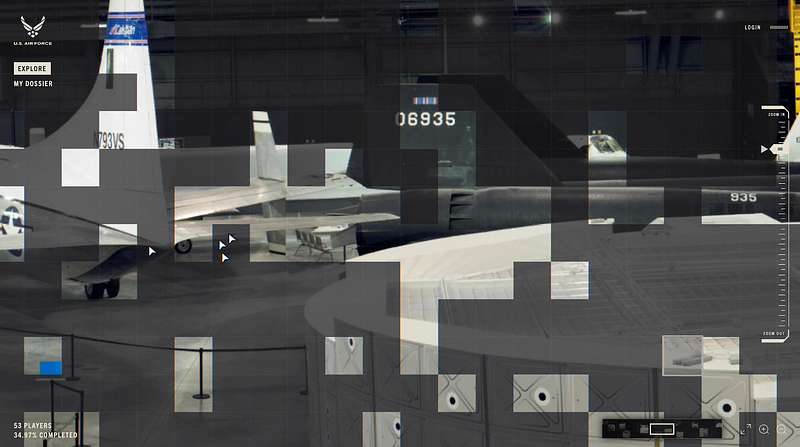
Generating the puzzle pieces
To make the puzzle layout we created a procedural puzzle generator in Houdini, which could automatically generate a unique puzzle with interlocking pieces from any input image. This tool saved us from having to create all 300 puzzle tiles manually by fully automating the puzzle generation and export process.

Balancing Puzzle Logic
Having determined the number of pieces, and basic navigation to get users into a puzzle, we were next faced with a critical task — make the puzzles fun. Easier said than done.
We found that early iterations of puzzles were particularly challenging, and even some of the sections we had marked as ‘easy’ were taking quite a long time to figure out. To balance this, we implemented a ‘snapping’ system that clicked correct pieces together. This snap radius was scalable, meaning for beginners we could increase the snap distance which made it easier to get started on easy tiles.
We also had to put systems in place to account for multiplayer actions, such as mechanics to avoid players grabbing and stealing pieces from each other.
Earning Points
A fun, simple way of encouraging users to continue to puzzle was giving them points for completing pieces correctly. But as some tiles were much harder than others (e.g. some tiles are almost entirely a single color) we developed a way of grading each puzzle tile from 1 (easy) to 10 (extreme).
To grade puzzle pieces we analysed each of the 3000 tiles based on colours and detail, the assumption being that more colour and detail made the tile easier to complete.
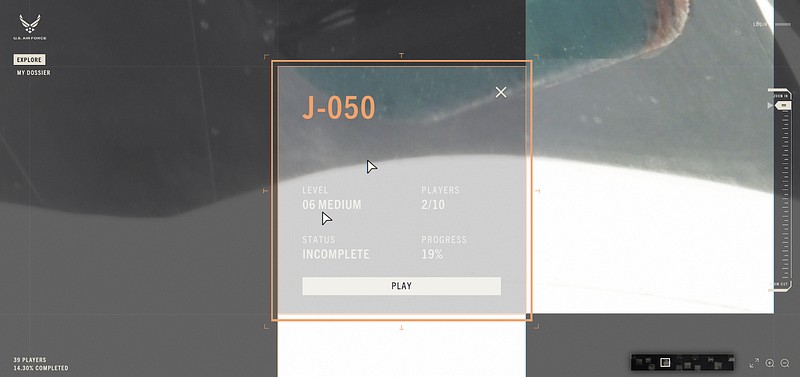
Unlocking Museum Content
As mentioned above, by sourcing a massive image with so much detail, we had the opportunity to highlight different parts of the image, educating and informing users about the Air Force and its history.
To do this we proposed a dossier concept. This would allow users completing puzzles to unlock bite-sized pieces of content (such as an image or video with supporting copy).

The Reception
Once live, the Million Piece Mission was picked up by a variety of press outlets and on forums like Reddit. Comments from Major Ross McKnight, Chief, National Events Branch:
“We are always looking for innovative ways to inspire and engage with the American public. The ‘Million Piece Mission’ is a challenging and interactive way to experience the National Museum of the U.S. Air Force while learning about careers and opportunities in the Air Force. The mission will require highly motivated, independent, and mentally tough individuals with attention to detail in order to complete. Those are the exact same traits we need in the next generation Airmen and, just like the puzzle, we want the best qualified applicant with the right job at the right time.”
Conclusion
While the Million Piece Mission was challenging from user experience and technical standpoints, it was an immensely rewarding project to work on.
